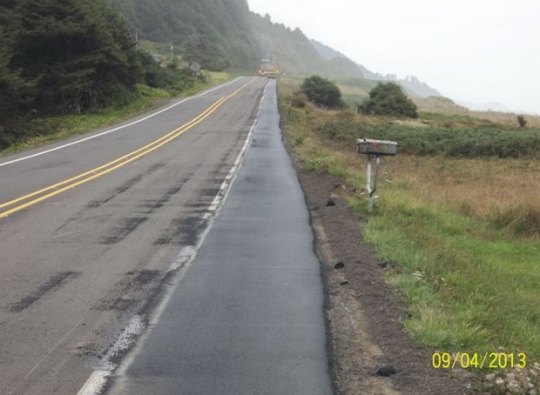
(Photos: ODOT)
In the latest twist to the ongoing saga of the Oregon Department of Transportation’s (ODOT) problematic paving job on Highway 101, a regional manager announced today that they’ve already made significant progress in making it better.
As we first reported last month, ODOT came under fire after a Portland man (who also happens to have over 30 years experience at the Portland Bureau of Transportation’s bike program) raised alarms about dangerous paving on the Oregon Coast Bike Route. In order to cut costs on a repaving job south of Florence, ODOT contractors placed a new layer of pavement just a foot or two over the fog line. The new layer of pavement left a ledge smack dab in the middle of the shoulder where people ride bicycles on the popular touring route. After a bit of digging, we learned via ODOT Region 2 Manager Sonny Chickering that this repaving job was done in 2011 after a new policy went into place outlawing the practice. That new policy went into place specifically as a bike safety measure.
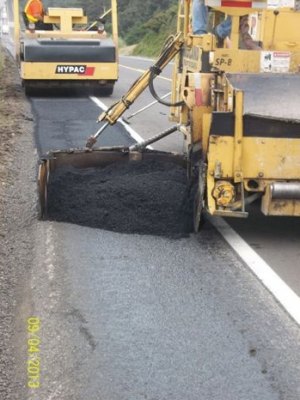
This morning, Chickering offered another update via email to make good on his promise to fix the situation after the “regrettable” oversight.
Here’s the salient excerpt from Chickering’s email:
“I am pleased to report that we have made significant progress regarding the shoulder paving issue on US 101 in Lane County. [ODOT District 5 Manager David]Warren has rapidly assembled a crew composed of this Region’s most skilled employees and equipment, supplemented with machinery and…and in a single day [September 4th] of construction, they were able to repave about half of the shoulder identified as nonconforming.”
Chickering added that they should be able to complete the rest of the shoulder paving work in a single day. Unfortunately, the weather has been a bit wet on the coast so he said they hope to get it finished by September 13th.
It’s nice to see such quick and capable action on Highway 101; but as we pointed out last month, this problematic paving practice has occurred on state highways throughout Oregon. We hope Chickering’s story spreads around the agency so these shoulders can all be brought up to current paving standards.


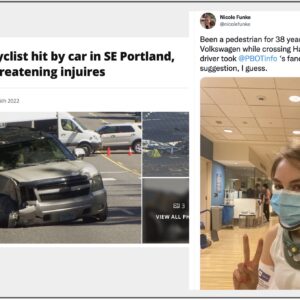
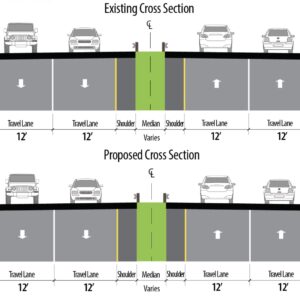

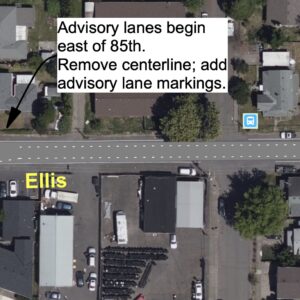
Thanks for reading.
BikePortland has served this community with independent community journalism since 2005. We rely on subscriptions from readers like you to survive. Your financial support is vital in keeping this valuable resource alive and well.
Please subscribe today to strengthen and expand our work.
This is good news. Thank you to ODOT for being responsive and doing the right thing.
Sometimes you just have to light a little fire around an issue. Good reporting, and good work everyone putting pressure on ODOT…hopefully, they will learn from this.
Good for you, Mr. Jeff Smith, for getting this all going. And to the rest for chiming in. Always great to see gov’t respond responsibly; now to just get them to do the right thing the first time around. Would be interesting to get a financial work-up on what this ‘mistake’ cost all of us.
If I was ODOT I’d pass the buck for the mistake to the state legislature. Surely their budget cuts were made with all the ham fisted surgical precision of The Incredible Hulk.
A lack of funding in a large organization, like the military or other governmental organizations, usually leads to cuts in activities that are not directly mission essential like training, external communications and advertising.
I’d be willing to bey good money that this screw up was due to “right sizing. ODOT had no option other than to obey their masters and say” everything will be fine”.
I wonder how much money was intended to have been saved with the budget cuts that likely caused this mistake and what was lost in fixing it.
‘Passin’ the buck’ on this issue is exactly what ODOT officials should not do. The dept’s relatively quick response to complaints about the road shoulder problem and repairs to the road shoulder indicates that persons within the dept have realized their decision to not fully pave road shoulders wasn’t a good one.
Less available money is a problem, not just for ODOT and other depts, governments, but fundamentally as well, for people that provide those entities the money for their operating budgets. Budget cuts should reflect wise prioritization made. Effectively eliminating adequate road shoulders for bike traffic to ride upon, is something I don’t think most Oregonians would choose, unless few other options existed. ODOT should follow that lead.
I agree that politically it would be suicide but ODOT very much should document in excruciating detail the flow of events that led to this point. At the very least it needs to be documented in an engineering study for scientific dissemination amongst fellow DOT engineers. Then the accounting dept of ODOT should be made plainly aware that some cuts have financial consequences.
At some point between ODOT’s financial and PR departments a private message to legislators may need to be transmitted letting them know that unless the laws are changed to allow ODOT to disobey its own rules some budget cuts may have opposite effects.
Simply burying the cause and effect and pretending that this was some simple brain fart ensures it will just happen again.
“Would be interesting to get a financial work-up on what this ‘mistake’ cost all of us.”
My thought exactly.
I think it would be instructive for everyone, those who thought the original repaving was fiscally responsible, those who refuse to consider raising gas taxes, those who think bikes don’t pay their fair share, those who looked the other way when it came to the August, 2011 change in rules governing this bit of infrastructure, etc.
We like to bitch and complain about ODOT/PBOT/LEOs etc. (and mostly rightly so), but this does show that state agencies can respond to the needs of the non-majority users (the almightly automobile). Continued diligence and vocal uproars will still be needed, but let’s applaud those involved on both sides for deeds done right.
Or from VERY heavy pressure from state tourism offices/boards.
My hat is off to Jeff Smith. Bravo sir!
Thanks, Gerik – but the truth is I didn’t have to expend a whole lot of effort. It consisted of:
1) Documenting problem with photos, noting locations;
2) composing critical/hysterical email detailing safety problem;
3) send to appropriate agency /interested and responsible parties; &
4) letting Jonathan/BikePortland and others run with it.
Granted, the responsiveness of ODoT made unnecessary potential steps 5 through infinity, and it’s a real credit to their organization and the individuals involved that they could recognize the mistake and immediately go to work to rectify it. That’s not always an easy hurdle, to be sure. So kudos to the ODoT folks on this.
Questions I’m left with are:
– the problem had existed for over 2 years, and probably had been cursed by a multitude of cyclists. Why hadn’t ODoT heard about it sooner? My hunch is that identifying who/where in the sprawling ODoT bureaucracy (Oregon’s a big state) to direct something like this is a huge obstacle. I’m pretty familiar with navigating transportation bureaucracies, and it took me quite a bit of digging through ODoT org. charts to ID who to direct this to. Maybe an email to the “Ask ODoT” general address would have worked, eventually…
– how prevalent is this problem around the state? From people who i heard from and who commented here, this is not an isolated incidence.
Anyone know how much of 101 is getting re-treated with this specific project? Last Summer I rode from just South of Tillamook down to Coos Bay, and a significant portion of the shoulder had the dreaded ledge, not just the area around Florence. I’d love to do more trips down the coast (and spend my money along the way), but the road conditions damped my enthusiasm.
Wow, good job everyone. Really surprised how quick this issue got resolved. That shoulder pavement looks dreamy, is there anyway to just keep these guys going?
Great photo. But curiously the shoulder (ahead of the asphalt spreader) doesn’t look half bad. 🙂
They ground down the pavement, removing the edge, prior to paving the new shoulder. You can just make out the new lip right at the fog line and the score marks in front of the loose asphalt.
My “now now” below was aimed at you.
Three cheers to everyone who made this happen! It’s always nice to see a happy ending.
Now now, don’t say that. We don’t want to encourage ground level employees to make value judgments about what does and does not require repair to state mandated standards.
There’s a time and place for allowing employees to innovate, skirt the rules and save money. When it comes to safety on our public roads: follow the rules like a mindless drone, we pay civil servants enough to get at least that.
Unaware of granpa’s point about grinding (another machine, cost, step!) my point was that *for the photo* it seemed ODOT had chosen to document their work where the previous job didn’t *appear* to be dangerous to bicycles.
Nice work, ODOT!
The basic problem is that the federal gas tax has been frozen at 18.4 cents per gallon since 1993. The Oregon gas tax was 24 cents per gallon in 1993 and was finally raised to 30 cents per gallon in 2011.
During that same interval (1993 to 2013) the construction cost index for roads, highways, etc. has risen just about 70 percent. That’s why ODOT is scrimping on everything. They have to.
Maybe there’s been a tiny reduction in gas tax revenues due to the higher mileage of some vehicles, but remember the Ford F150 is still the biggest seller in the vehicle fleet year after year. Any loss due to improved fuel economy is dwarfed by the loss due to construction cost increases. Keep in mind that asphalt and gasoline come from the same source.
Let your legislators know at every opportunity that you support raising the gas tax or tying it to inflation. Remember in 20 years the federal tax has increased by 0; the Oregon tax has increased by 25 percent; and construction costs have increased by 70 percent.
Yes to the funds mis-match….
But – ODOT are not just innocent bystanders here.
Why is ODOT scrimping on projects important to those of us on two-wheels, but when it comes to cars-first, cars-über-alles projects why does ODOT, who are in an excellent position to understand the already existing funding shortfall you describe, take such a boosterist approach to unfunded and unfundable future projects like the CRC?
Of course, WashDOT has taken an even more myopic approach:
“Washington is in even worse shape. After years of denial, the state recently slashed long-term revenue forecasts by billions of dollars. But since the state back-loaded interest payments on many of its highway bonds, its debt obligations will rise even if fuel tax receipts dip. Within just a few years, more than 70 percent of the state’s gas tax receipts will go to pay off debts on projects that have already been completed—leaving precious little gas tax revenue for maintenance of existing roads, let alone new construction.” (emphasis mine)
http://bikeportland.org/2013/05/14/report-end-of-driving-boom-requires-a-new-direction-86720#comment-4019833
Very happy to see ODOT move so fast on this!
I don’t understand the comment. Grinding removes surface irregularities and leaves a rough surface of pavement to which new pavement adheres strongly. Grinding is not the artistic interpretation of construction directives. It is the best, most permanent method of repaving, and it is also the most environmentally friendly (oxymoron?) because the depth of work is limited and the grindings can be reused in new pavement. I may be a cranky old bastard, but I think we agree that bicyclists deserve first quality work.
This wasn’t for you.
Fat fingers, touchscreen, cancel reply & post close together. Press wrong one and it takes a few seconds for scree to indicate you did. By then I’ve pressed the correct button but too late.
I’m impressed by ODOT’s response. Thanks to all involved. Sadly, much of the eastbound Don Stathos bikeway between Medford and Jacksonville has a seam (not a ledge) down the middle–since about 2010. Not as highly traveled as 101, perhaps, but a key symbolic and historic route for our state.
Kudos to ODOT for owning up to the problem and fixing it. Now, how do we get the person who made this decision to talk to the person who made the Barbur decision?
Where can I send the thank-you cards?
Region Manager – Sonny Chickering (503) 986-2631
Region 2 Office
455 Airport Rd SE, Bldg B
Fax: (503) 986-2630
Salem, OR 97301-5395
from the ODOT state phone book, p. 172
http://dasapp.oregon.gov/statephonebook/statephonebook.pdf
” After a bit of digging, we learned via ODOT Region 2 Manager Sonny Chickering that this repaving job was done in 2011 after a new policy went into”
It doesn’t take too much digging to find out that the policy wasn’t exactly new. Chickering’s story doesn’t hold water.
“B.3. PAVEMENT OVERLAYS
“Pavement overlays are good opportunities to
improve conditions for cyclists if done
carefully: a ridge should not be left in the
area where cyclists ride (this occurs where
an overlay extends part-way into a shoulder
bikeway or bike lane). Overlay projects offer
opportunities to widen the roadway, or to
restripe the roadway with bike lanes”
“Recommendations
“• Extend the overlay over the entire roadway
surface to avoid leaving an abrupt edge;”
and about 6 more bullets with a lot of detail.
1995 Oregon Bicycle and Pedestrian Plan
http://www.oregon.gov/ODOT/HWY/BIKEPED/docs/or_bicycle_ped_plan.pdf p. 173
still curious who paid to fix the ‘mistake’?